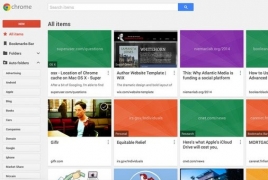
Chrome 60 is rolling out to Mac, Windows, and Linux with an assortment of developer-focused features and security fixes. On desktop, it adds support for the Payment Request API, updated Credential Management API, and more, 9to5Google reports.
After several months of testing in the beta and dev channels, Chrome for Mac is finally rolling out support for the Touch Bar in stable. It’s slightly tweaked with the Omnibox for searching and entering URLs featuring a Google logo, while there is also a new add bookmark and new tab button.
Users can also change the layout of the Touch Bar by heading to View > Customize Touch Bar in the menu bar. Besides adding and removing buttons, there is also an option to disable typing suggestions.
This version also tweaks the Incognito warning text with a more concise description of what the mode can and cannot do.
Besides the new Mac functionality, Chrome 60 for desktops lacks other notable user-facing features after the previous version rolled out a Material redesign of settings. However, there are a number of tools that web developers can take advantage of.
The CSS font-display property and CSS @font-face descriptor will allow for faster font loading by sites. In the past, the browser delayed rendering text until the corresponding font was downloaded. With these new additions, developers can specify how and when Chrome displays text content during the load.
Meanwhile, the Payment Request API for auto-filling checkout forms is now available on desktops, while on mobile it allows for native Android payment apps to leverage the API. Lastly, the Credential Management API is now simpler for developers to implement with user passwords now being returned directly.
On Android, version 60 introduces a new homescreen widget that opens the Omnibox for quicker searching and immediate URL entry.
Chrome 60 for desktop is now available, with updates for Android and Chrome OS coming soon.

